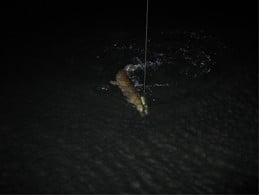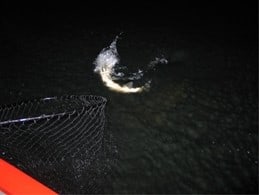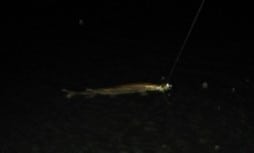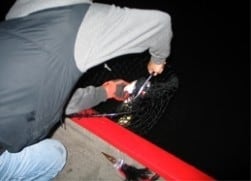Catching Them is Exciting – Bring them Onboard!

I’ve tried to land a fish successfully when I first started fishing. I’ve had a muskie on my line that fought and fought with me to get itself free. I did everything I was supposed to do to tire the fish out. I thought I let the drag on my reel and my rod do their job. I let the fish make long runs away from me and I would reel it back in. The fish would work it’s way around the boat and I would let it. Guess what? It got away. Read my story in the “About Us” section.
What I didn’t do was set the drag on my reel correctly nor did I keep my rod at a 45 degree angle. When you follow the techniques for setting the drag your fish will slow down and stop taking the line, in an essence, tire itself out and making it easier to land a fish. You can then start working on landing your catch. The pictures located on this page are from when we fish at night. We enjoy going night fishing as that is when larger more aggressive fish are more active. We usually go during a full moon cycle as there is light for us to see not to mention the lunar cycle makes the fish more active.

Your fish will try to get away again, let it do so and follow the same process. You’ll see that soon the length your fish will try to swim away will become shorter and shorter because the fish will start getting more and more tired.
This is an exciting time because it’s telling you that you’re getting closer and closer to land a fish.


Smaller fish are easier to land. You can net the fish, pull your line out of the water with the fish on it, or carefully use your thumb and index finger to grip onto the fish’s lower jaw. Doing this technique holds the jaw open and stuns the fish as you pull the fish out of the water and remove the hook.
Remember to practice Catch-N-Release if you do not plan on keeping your catch. View our “Catch-N-Release” section to learn more about preserving fish conservation.

